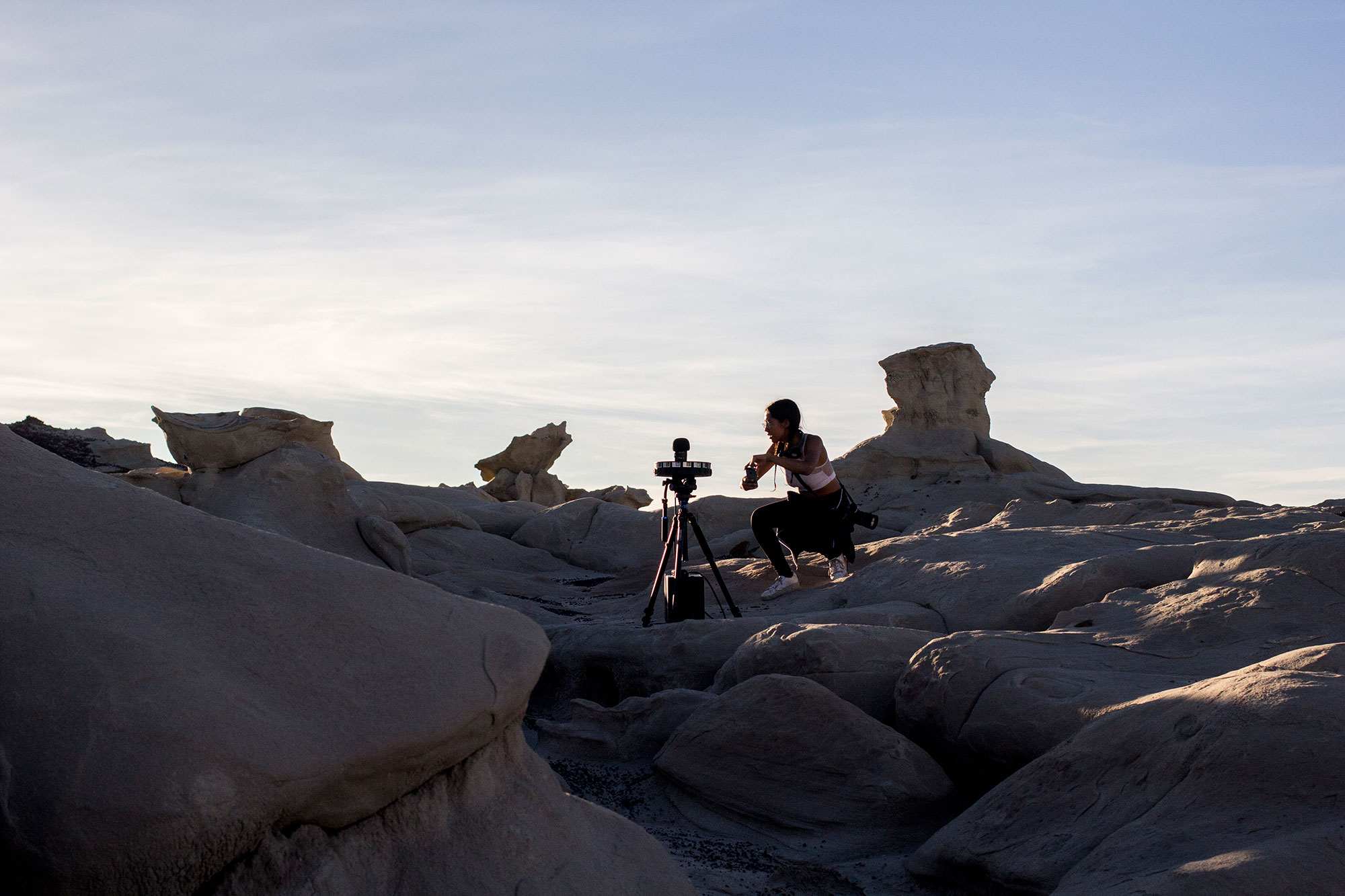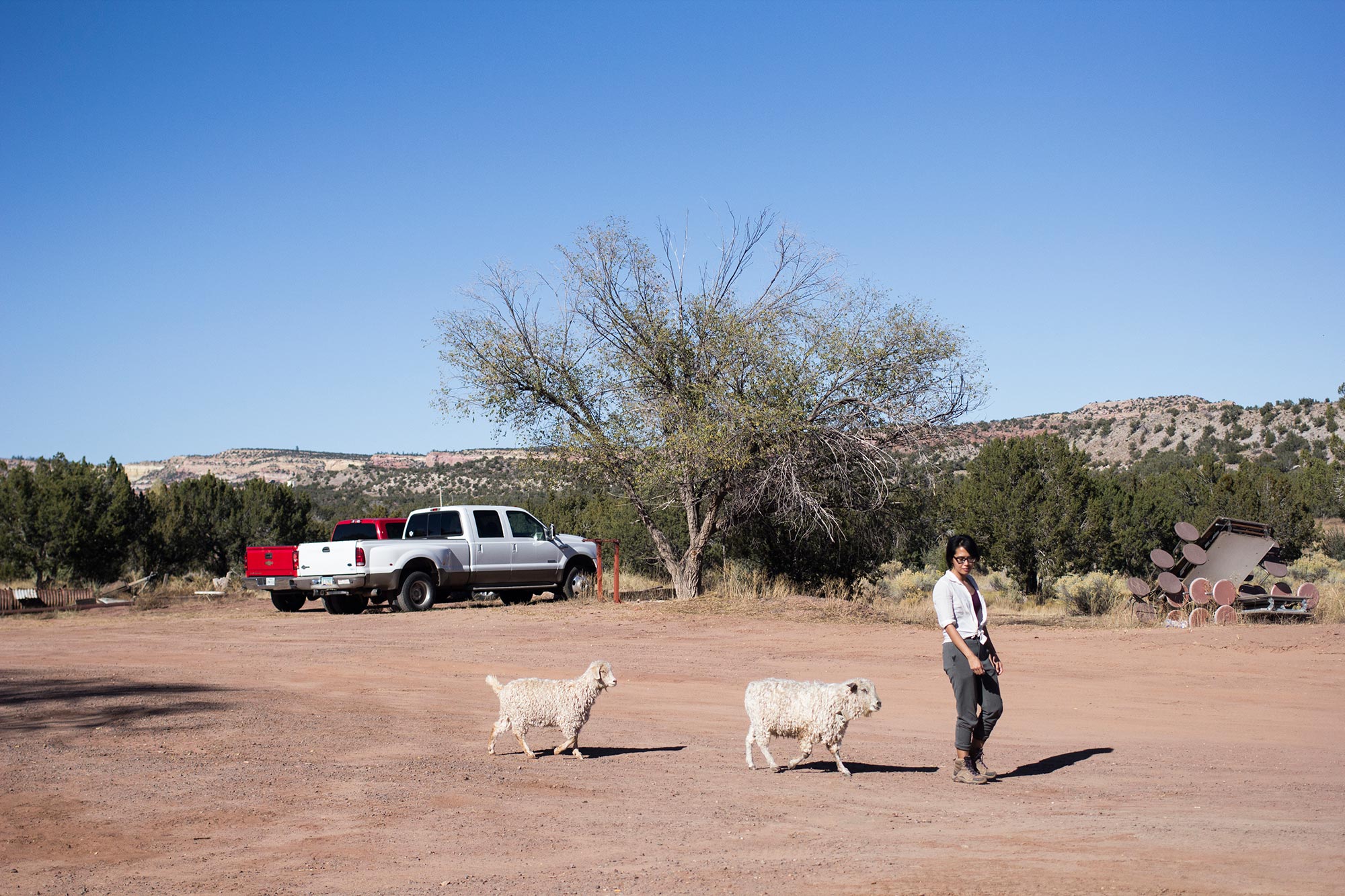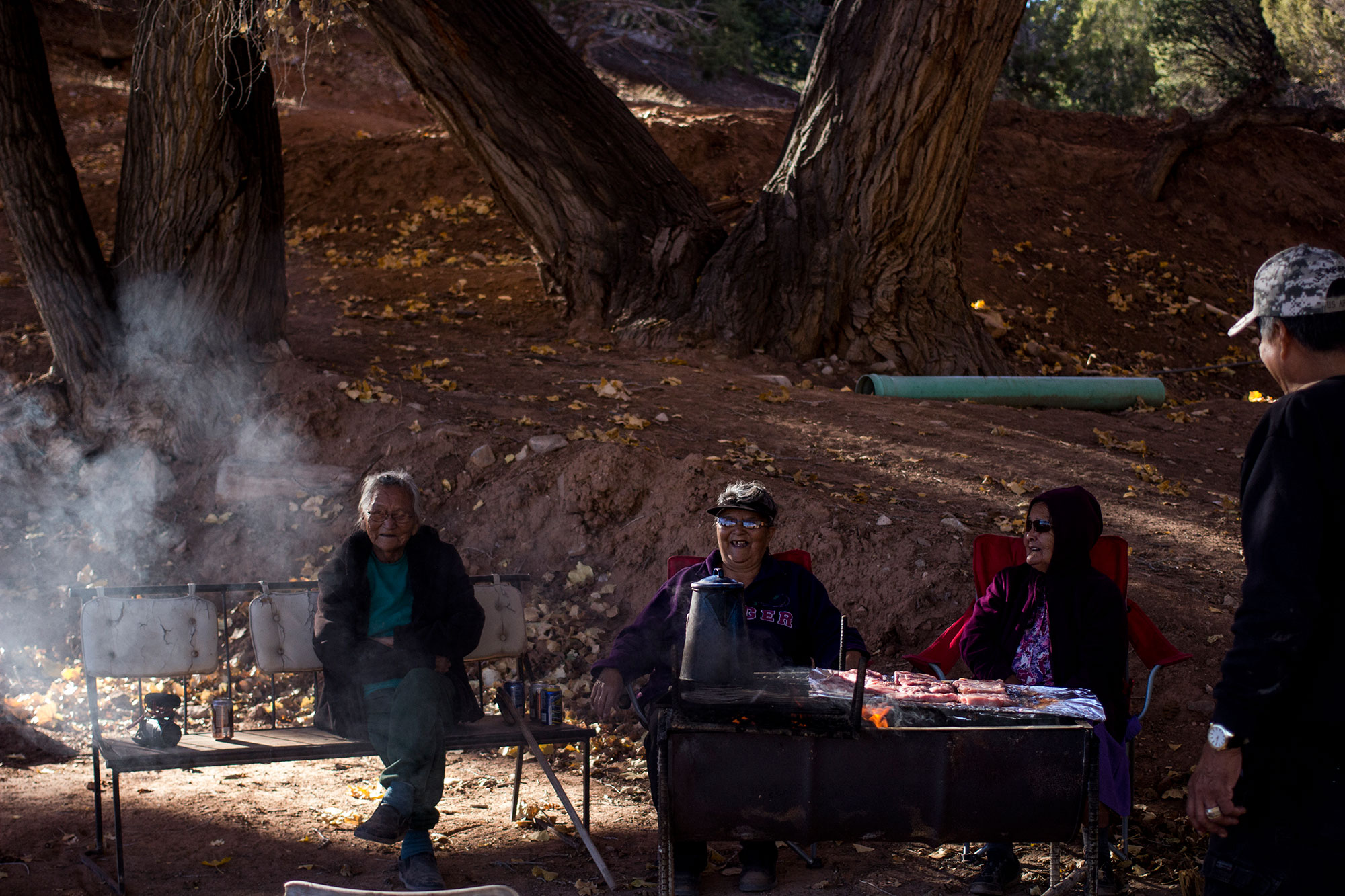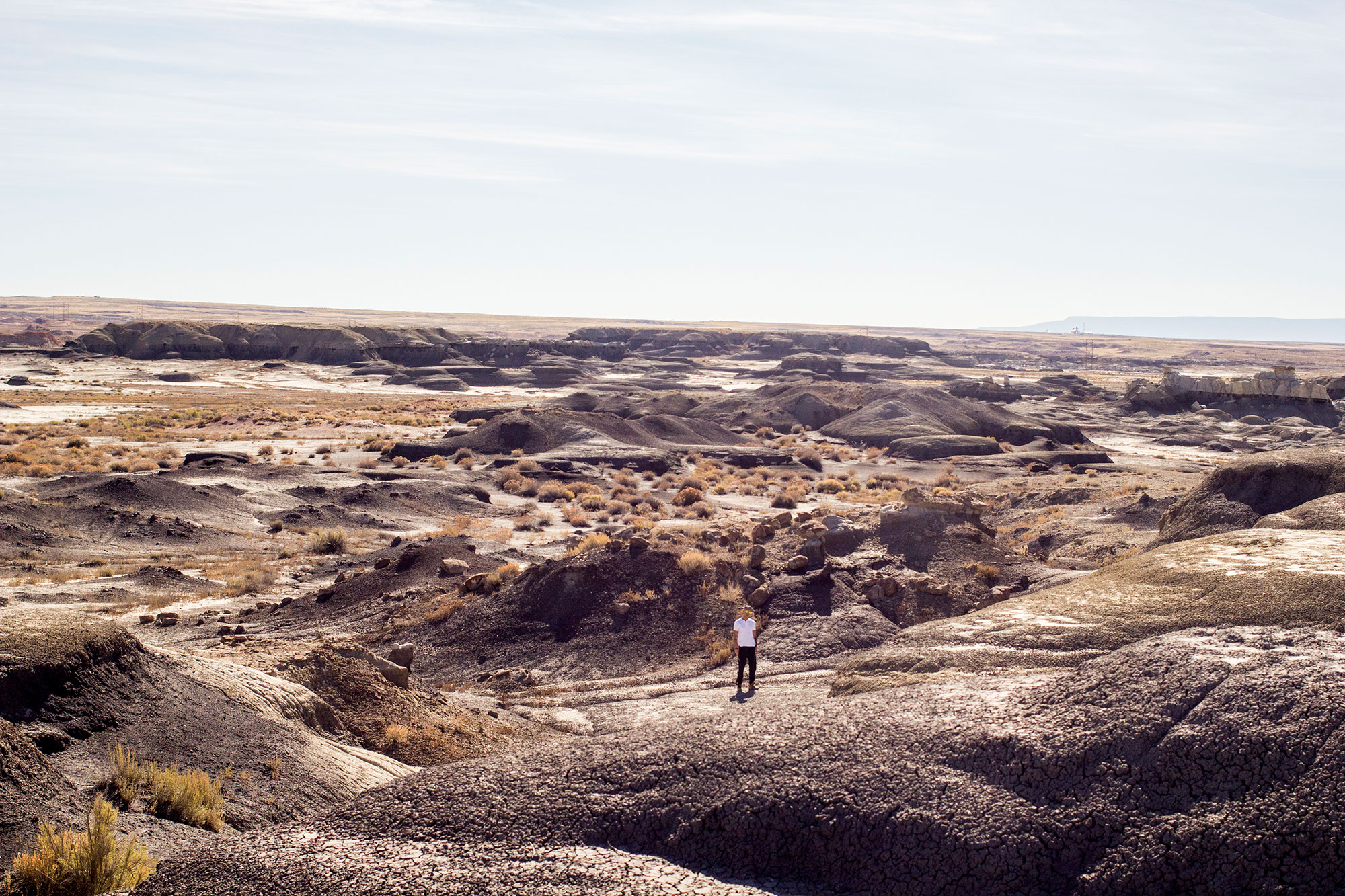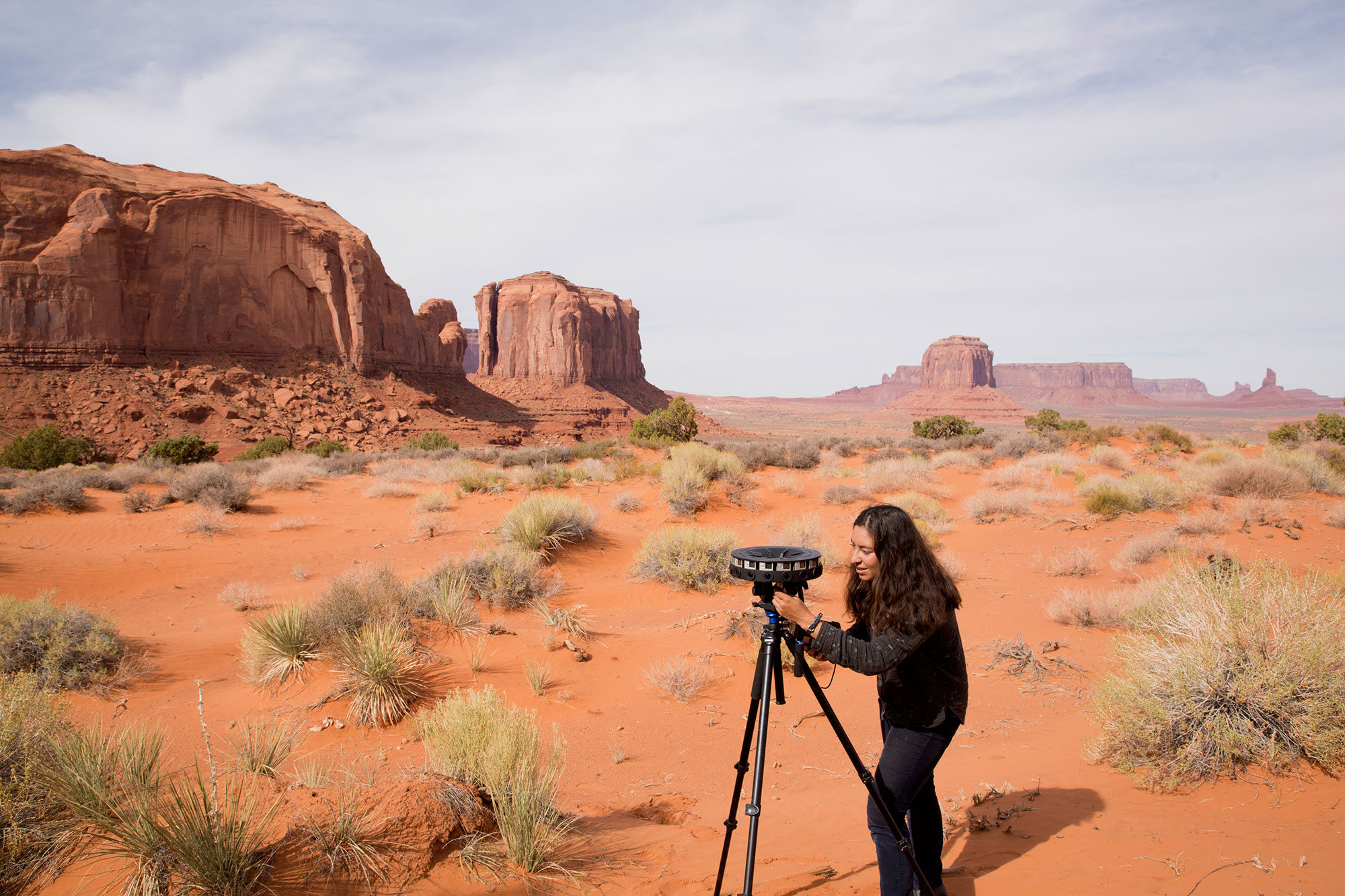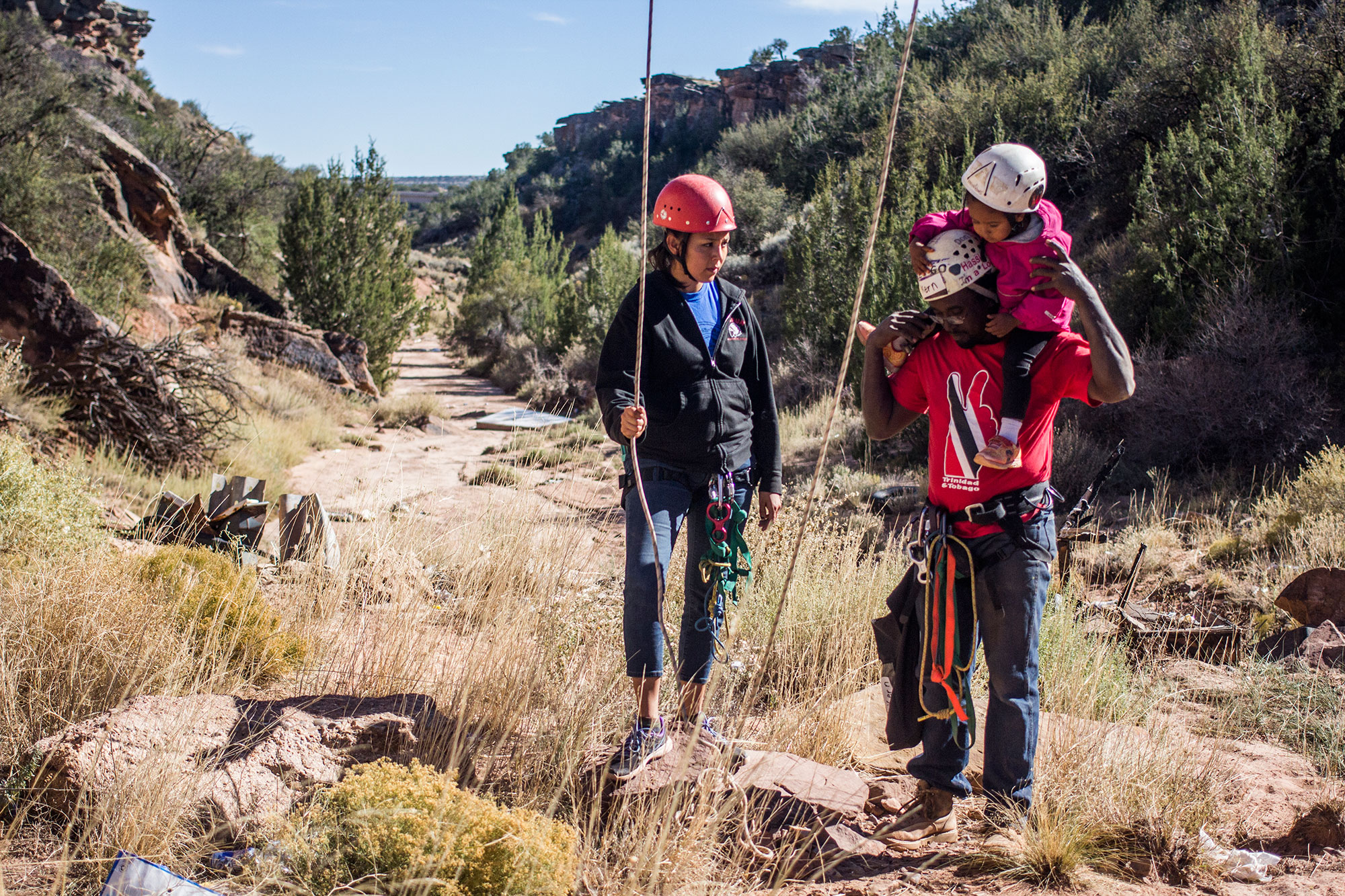
After driving through the monotonous browns and yellows of desert, it is tempting to dismiss Diné Bikéyah (Navajoland) and its surroundings as “the middle of nowhere.” Vast swaths of emptiness baking under the sun, occasionally interrupted by the sight of an abandoned gas station or a rusting billboard sign. At times, life can only be quantified by counting the tank trucks on the road. Everything is quiet except for the revving of engines passing through, rushing to their destinations.
This is how the land is seen by those unfamiliar with it, perpetuating the social and economic disparities that trouble the Navajo people and other indigenous communities in the Southwest United States. Because the land seems barren, it is assumed there are no opportunities to thrive there. Because of the lack of opportunities to build and thrive, the land continues to look and feel barren. The vicious cycle of misperception and mistreatment can be traced back to the genesis of this nation. The notion of value is only bestowed upon the land’s unseen underbelly – minerals, gases, and other resources that fuel modern civilization.
But ever so often the road rounds and a silhouette of rock appears from a distance. It gets larger upon approach until it can no longer be ignored: canyons of gold and red towering over the plains, glittering under the sunlight. Green brushes dot its jagged outline, defiantly growing under the arid heat. The slopes visibly made from layers of sedimentary rock varying different shades, an indication of how the Earth moved - risen - on its own primordial pace.
What once looked like an inert mass springs into effervescent life, a transformation so shocking it throws into question the foundations of reality.
Who and what is really living?
Ways of Knowing is a multimedia project about Navajo Nation’s health and tradition through its enduring and traumatic encounter with uranium mining. This history began in the 1940s, as the U.S. government’s need to sustain its nascent nuclear weapons program became top national security priority. After perfecting nuclear weapons technology under the Manhattan Project, the United States could no longer depend on the Belgian Congo and Canada for uranium; the supply had to be closer to home. Uranium mining for weapons production started in the western region of Navajo Country – in the stunning crimson sandstones of the Colorado Plateau – under the auspices of the Vanadium Corporation of America as “sale of carnotite and other related materials” to preserve secrecy. Navajo land was seen as the perfect location, since it looked like open space without any real vestiges of life. A few years after the Hiroshima and Nagasaki bombings, the U.S. government established the U.S. Atomic Energy Commission to facilitate domestic mining activities on a larger scale, extending prospecting to other parts of Navajo Country to include sacred mountains like Tsoodził (Mount Taylor) and Tsé Bitʼaʼí (Shiprock) in the East.

Interpretations of Navajo Territory boundaries, including from non-Navajo communities (explorers; cartographers; and military expeditioners).
"Composite Map Delineating Boundaries of the Navajo Country as Described in Various Documents," U.S. Indian Claims Commission, "Proposed Findings of Fact in Behalf of the Navajo Tribe on Indians in Area of the Overall Navajo Claim," Cited by Traci Bryne Voyles, Wastelanding: Lagacies of Uranium Mining in Navajo Country, pg 211 - 212.
Eventually, mining to support nuclear power outpaced mining for the Manhattan Project. Along with this transition is the gradual distancing from uranium mining’s violent contributions to nuclear weapons production. While the rest of the world can make a distinction between uranium for bombs and uranium for energy, these categories cannot separate the loss that the Navajo and other vulnerable populations in the area experienced due to the atomic enterprise. Consider the historical pattern of concealing health hazards from miners, or the constant remapping of Navajo land in pursuit of uranium deposits, or the hundreds of abandoned uranium mines that continue to contaminate the land. It is difficult to parse out what is described as “peaceful uses” of the atom when the legacy of the bomb has yet to be recognized and rectified.
Ways of Knowing serves as a reminder that nuclear weapons are not just made of secrecy, science, and steel; their power is in part derived from the heaviest naturally occurring element extracted from the Earth at the expense of indigenous lives. A bomb need not be dropped to have consequences. Its very existence has transformed our relationship with the land, from a state of kinship and stewardship to extraction and control.
Within the Diné community, the impact of uranium mining cannot simply be measured by elevated levels of uranium in public water sources or the number of major accidents that have occurred.
Trauma transcends statistics. Facts and figures are helpful in forming a baseline understanding of what happened in Navajo land, but they cannot express the full depth of its loss. There is no other way to know until one listens intently and humbly to the lived experience without any preconceived assumptions about where it falls within the strata of technical nuclear knowledge. This kind of listening requires a special shedding, a removal of pretense that we already know better –without assuming that the loss, however egregious, is somehow justified to protect the country.
Ways of Knowing is the physical manifestation of this deep listening. The Bombshelltoe team approached the process without any expectations of how the story should be told; it felt disingenuous and one-dimensional to develop a project solely focused on uranium and the exploitation that transpired. The team partnered with Navajo community members to collectively compose a storyline that presents the ground truth, including the hard work that goes into creating a space for healing despite the impossibility of full restoration. The product is not a recollection of nuclear trauma without resolution. Rather, Ways of Knowing is a beautiful love story of how the land will always be family, not property, and the ways in which the Diné community is using traditional storytelling and citizen science to rebuild amidst the nuclear legacies that continue to haunt generations.
Ways of Knowing challenges the way the public can think about and act against nuclear weapons.
Throughout this initiative, the Bombshelltoe team seeks to find the citizen’s place in the nuclear conversation. If people do not feel empowered to make change at the highest policy levels to preserve international frameworks that prevent nuclear weapons development and use, then what does it mean to start locally? Are there steps we can take as individuals or communities to support environmental rehabilitation and remediation caused by nuclear weapons production? And how can we better connect these localized challenged into the broader conversation about dismantling the bomb?
Navajo storyteller Sunny Dooley says that the narrative of being indigenous is about affirming “victors, not victims.” Ways of Knowing offers a glimpse of resilience in the face of unrelenting exploitation traced all the way back to the development of the atomic bomb. Only by recognizing the intersecting threads of nuclear weapons production and environmental injustice can we begin to understand the far-reaching impacts of nuclear policy.
We hope that presenting this narrative will help challenge the dominant assumption that nuclear issues are too complex, too grand of a problem for ordinary people to grapple. In reality, it has always started from the humblest and most sacred of places -- of Earth, of rock, of home.
–
Words by Lovely Umayam
Stories by Sunny Dooley
360 Virtual Reality Short Film by Kayla Briët
Photography by Adriel Luis and Carmille Garcia
With gratitude to
Janene Yazzie, Tina Garnanez and family, Bobby Mason, Tommy Rock, Myrriah Gomez, and Susan Gordon.



